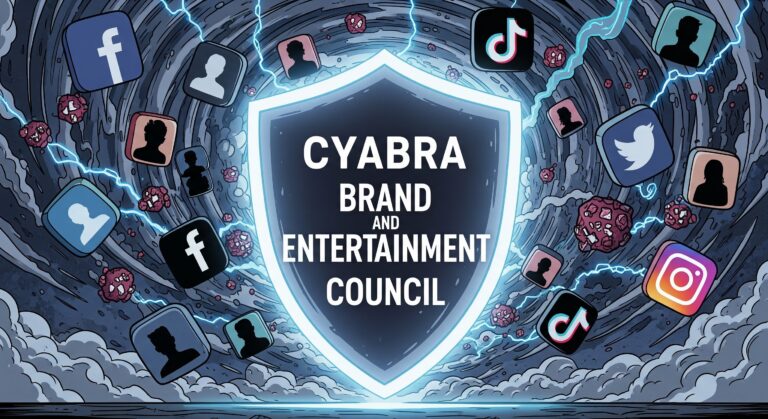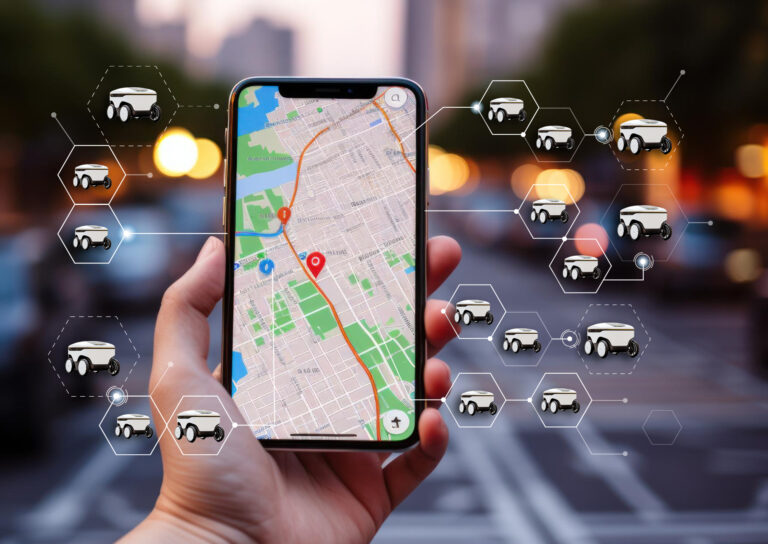This practical playbook equips corporate communications professionals with systematic workflows to proactively defend against diverse social media threats, including coordinated campaigns, fake accounts, and content manipulation. It provides a structured 30-day implementation plan with daily monitoring routines and rapid response protocols.
TL;DR
- Social media disinformation campaigns can systematically damage brand reputation through coordinated fake accounts and manipulated narratives
72% of consumers expect brands to respond to a crisis within 24 hours, while 41% of companies that fail to respond within 48 hours face lasting reputation damage - Preparation is cheaper than crisis response, making the incorporation of daily monitoring routines essential.
- Integrating automated monitoring with human analysis is the most effective brand resilience system, and can significantly strengthen a brand’s defense against multiple threat types
The New Normal for Communications Professionals
Imagine logging into your morning news briefing to discover coordinated campaigns spreading false narratives about your company, a flood of fake customer accounts with fabricated complaints, or impersonation accounts engaging with your customers using your brand name. For today’s communications professionals, these scenarios are becoming increasingly common.
In today’s hyperconnected world, a brand crisis doesn’t wait for business hours. The digital landscape operates on a 24/7 cycle, and threats to brand integrity can emerge at any moment. For communications professionals, this reality has fundamentally transformed the workday.
The threat landscape has also expanded far beyond any single tactic. Brands now face coordinated disinformation campaigns that combine multiple attack vectors. Traditional reactive approaches to crisis communications are failing against these sophisticated campaigns. When coordinated attacks can be launched in minutes and spread globally in hours, waiting until after a crisis erupts means you’re already too late. The modern communications professional needs a systematic, proactive defense strategy.
The statistics paint a clear picture of what’s at stake: according to recent research, 72% of consumers expect brands to respond to a crisis within 24 hours (Morning Consult). More concerning, 41% of companies that failed to respond within 48 hours faced lasting damage to their reputation (Amra & Elma).
These numbers underscore why a structured, round-the-clock approach to brand monitoring is essential for survival in today’s business environment.
Morning Routine: Establishing Your Brand’s Daily Defense
The First 30 Minutes: Your Brand’s Vital Signs
Just as a doctor checks vital signs during morning rounds, communications professionals need a systematic morning assessment of their brand’s digital health. This morning baseline is critical: it establishes what’s “normal” for your brand online and helps you quickly spot anomalies that might indicate emerging issues.
Implementing a focused 30-minute morning workflow accomplishes several critical objectives:
- Scan overnight mentions across all platforms where your brand has a presence
- Assess sentiment shifts that may have occurred while your team was offline
- Identify emerging narratives that could evolve into potential threats
This morning assessment is more than crisis detection: it’s about establishing the foundation for proactive management throughout the day. Brands that invest in crisis management recover faster after a PR crisis. This morning routine represents one of the highest-ROI activities in your daily schedule.
Midday Monitoring: Real-time Response in Peak Engagement Hours
The period from 10am to 2pm typically represents peak engagement hours for most brands. During this window, communications professionals should focus on tracking three key metrics:
- Spread velocity: How quickly are conversations about your brand spreading?
- Sentiment drift: Is the emotional tone of these conversations shifting in real time?
- Engagement patterns: Who is engaging with your brand, and are their behaviors consistent with historical patterns?
Perhaps the most critical skill during midday monitoring is the ability to differentiate between organic conversations and potential coordinated disinformation. A simple 3-point authenticity framework can help:
- Source credibility: Evaluate the history and reliability of accounts engaging with your brand
- Pattern analysis: Look for unnatural synchronization in messaging or engagement
- Velocity assessment: Natural conversations typically follow predictable growth patterns; sudden spikes may indicate manipulation
Afternoon Analysis: Converting Detection to Action
Afternoon hours should shift from detection to analysis and action planning. This is the time to categorize issues by:
- Urgency: Does this require immediate response?
- Impact potential: How widespread could this become if left unaddressed?
- Required response level: Does this need executive involvement or can it be handled at the team level?
The afternoon is also when you should apply a decision framework for determining appropriate responses. Not every negative mention warrants engagement—sometimes monitoring without direct response is the strategic choice. Consider:
- Is engaging likely to amplify or contain the issue?
- Does the source have sufficient reach to warrant a response?
- Will your response reach the same audience as the original message?
Evening Evaluation: Securing Your Brand Overnight
Before your team signs off for the day, conduct an end-of-day assessment that identifies trends that developed throughout the working hours. This assessment should inform the parameters you set for automated overnight monitoring.
Effective overnight monitoring requires:
- Alert thresholds: Define specific triggers that would warrant waking someone up
- Escalation protocols: Create clear guidance on who should be contacted and when
- Morning handoff documentation: Prepare briefing materials for the next day’s morning assessment and finalize reports for executives

Building Your Custom Brand Resilience Workflow
- Industry-specific threats: Financial services brands face different risks than consumer packaged goods
- Audience engagement patterns: B2B brands may have different monitoring needs than consumer-facing companies
- Team size and capabilities: Smaller teams need more automation, while larger teams can incorporate more human analysis
While this 24-hour framework provides a strong foundation, it must be adapted to your specific brand needs and available resources. Consider:
The most effective approach integrates this daily monitoring workflow with your existing crisis management protocols. This integration ensures a seamless transition from monitoring to response when needed.
How to Implement a 30-Day Plan For Brand Resiliency
Week 1: Monitoring Audit and Enhancement
- Day 1-2: Audit existing monitoring tools for gaps in detecting fake accounts, coordinated campaigns, and manipulated content
- Day 3-5: Implement additional monitoring solutions focused on multi-vector threat detection
- Day 6-7: Train team members on new monitoring protocols and alert systems
Week 2-3: Workflow Development
- Day 8-10: Establish a daily monitoring workflow
- Day 11-14: Develop response templates for various disinformation scenarios
- Day 15-17: Create your rapid response team structure with clear roles and responsibilities
- Day 18-21: Establish approval chains and decision-making protocols
Week 4: Testing and Refinement
- Day 22-25: Run tabletop exercises simulating different disinformation scenarios including coordinated campaigns, fake accounts, and content manipulation
- Day 26-28: Refine protocols based on exercise outcomes
- Day 29-30: Finalize playbook documentation and conduct team briefing

Conclusion: Vigilance as the New Standard
The landscape of brand reputation management has fundamentally changed.
Communications professionals face a complex threat environment including coordinated campaigns, fake accounts, content manipulations, impersonation attacks, dis-, mis- and mal-information.
The data is clear: in an era where consumers expect swift crisis responses, communications professionals must establish structured monitoring workflows that ensure continuous brand protection. The 24-hour brand shield is now the standard for communications professionals’ survival skills in the disinformation era.
But it’s also not enough. Today’s brand teams face more platforms, more languages, and more audiences than ever – along with greater risks from bad actors, competitors, disappointed customers, and trolls. With AI tools that can turn any complaint into a viral backlash, manual monitoring can’t keep up.
The smartest strategy, therefore, combines human expertise with intelligent monitoring tools that work for you – alerting teams to any narrative shift, assessing the authenticity of communities and profiles, and tracking harmful trends to their source. Investing in structured, technology-driven monitoring is crucial for thriving in an increasingly complex and risky digital landscape.
Your brand’s reputation is too valuable to leave unprotected. Start implementing your daily disinformation defense strategy today.
When suspicious accounts post about your brand, review the following factors:
Profile Completeness: Check for empty profiles with zero to no content, stock photos, or generic usernames
Activity Patterns: Look for bot-like posting (posting too fast and too much for a human) or repetitive messaging
Engagement Quality: Assess whether engagement appears authentic or artificially inflated – such as hundreds or thousands of similar-looking followers.
Account History: Review account age, follower quality, and historical posting patterns. Has the account primarily posted about brands? Are they posting in different languages?
Here are four aspects that are common in coordinated fake campaigns:
Messaging Similarity: Look for identical or nearly identical messages across multiple accounts
Timing Patterns: Note synchronized posting times suggesting coordinated activity
Network Connections: Identify clusters of accounts interacting primarily with each other
Platform Spread: Track whether narratives are being pushed across multiple platforms simultaneously
Here is a standard assessment process for potentially manipulated content:
Visual Inconsistencies: Check for signs of editing, altered screenshots, or manipulated images – by AI or human hand. Check videos for signs of deepfakes or GenAI alterations.
Source Verification: Is this a credible news outlet that is quoted? Is it credible? Trace the content origin and verify through official channels.
Context Analysis: Assess whether content has been taken out of context or misrepresented (malinformation)
Identify team members with complementary skills:
Communications lead
Legal/compliance advisor
Executive liaison
Social media manager
Assign specific responsibilities to each team member:
Who verifies content authenticity and account legitimacy
Who drafts responses
Who secures executive approvals
Who handles media inquiries
Who manages social platforms and community responses
Create clear decision-making frameworks for various scenarios:
Severity assessment criteria
Escalation thresholds
Response timing guidelines
Read More:
- 72% of consumers expect brands to respond to a crisis within 24 hours (Morning Consult).
- 41% of companies that failed to respond within 48 hours faced lasting reputation damage. 73% of brands that invested in crisis management recovered faster after a PR crisis (Amra And Elma LLC),


